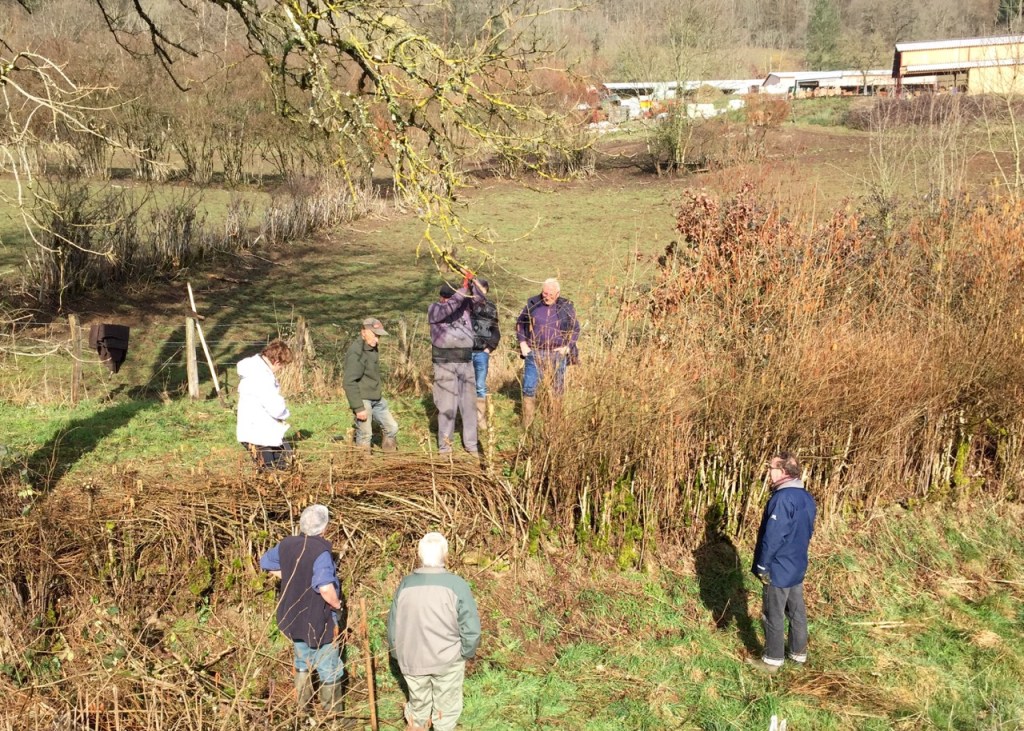 March was traditionally the month for hedge laying in the part of rural France where I have roots. The hazel hasn’t yet begun to bud nor the birds to nest. Cutting into the upright stems so that they can be pushed flat and woven together with stakes creates a stock-proof barrier that will last 20 or 30 years. Growing up on a farm, I saw the end of hedge-laying as machinery replaced human labour. Nowadays, the hedges are shaved from tractors, but the result is ugly and ineffective: it’s barbed wire that keeps the cattle in the fields.
March was traditionally the month for hedge laying in the part of rural France where I have roots. The hazel hasn’t yet begun to bud nor the birds to nest. Cutting into the upright stems so that they can be pushed flat and woven together with stakes creates a stock-proof barrier that will last 20 or 30 years. Growing up on a farm, I saw the end of hedge-laying as machinery replaced human labour. Nowadays, the hedges are shaved from tractors, but the result is ugly and ineffective: it’s barbed wire that keeps the cattle in the fields.
So hedge-laying has become a conservation issue, and people organise events during March throughout this Natural Park just to keep the skills alive. Yesterday I worked with neighbours to do a stretch, just for the pleasure of it. It was a convivial morning, as people who didn’t always know one another got stuck in; and this being France, the mid-morning break for bread, ham and wine was as important as the work.
I had thought hedge laying was difficult until I was shown how it’s done. Actually, it’s quite straightforward: cut into the wood enough to bend it easily and then weave the branches together. Hazel and hawthorn are tough and forgiving, even of clumsy hands like mine: they grow back with the spring. As in any human art, there are those who become very skilled and capable of producing beautifully regular hedges from a wild tangle. Competitions abound and, across Europe, there are stylistic variations reflecting local geography and culture.
What we did yesterday wasn’t art, though it might be culture. But it has much in common with the community art projects you find in post-industrial communities searching for connections. Like a lantern parade or a community theatre production, hedge laying is open to everyone, though some do it better than others. It’s a shared enterprise, through which people benefit individually because they benefit together. It’s an expression of values: working with rather than against the natural world, and working together, creating community by enacting community. It leaves a visible trace in the world, but in doing so it produces a change in how we live that is more profound. It’s unnecessary – and that’s why it’s so important.
And then another parallel came to me today, as I read something that the American poet, Theodore Roethke, once jotted down in his notebook:
‘Art is the means we have of undoing the damage of haste. It’s what everything else isn’t.’
Community art, in its essence, really is as old as people, as old as community.


Responses
Not unlike the type of gathering we’d get when cutting turf for winter except we’d stop for cold sweet tae from a jar and bread with strawberry jam.
LikeLike
Poitin
LikeLike